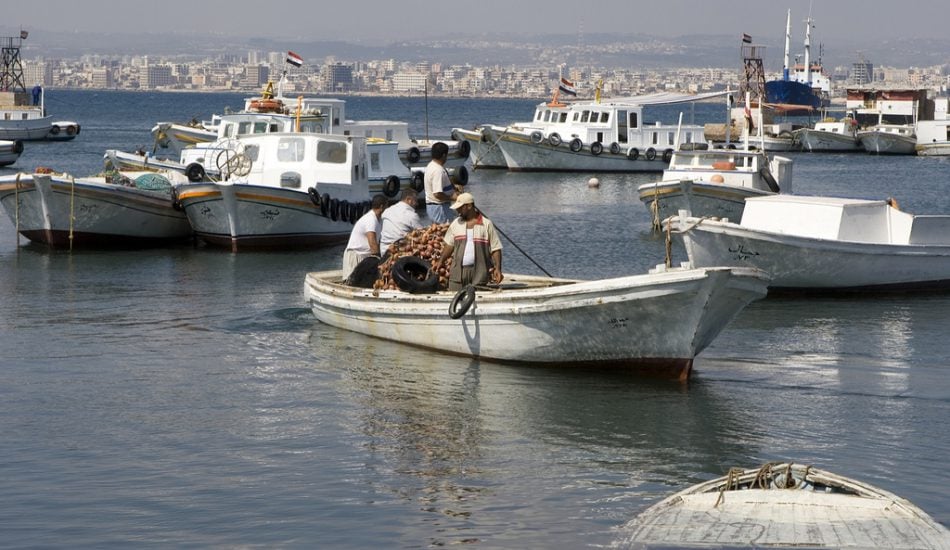
Inefficient water use
Low water productivity in agriculture is a major challenge facing water management in Syria. Net returns for crops are generally quite low. Cotton and sugar, which are planted over 221,000 ha, have negative net returns (measured in social prices).
Almost all groundwater resources are overexploited, causing continuous lowering of groundwater levels. This is unsustainable and leading to an increasing deficit in the water balance.
Excessive physical and administrative water loss is another challenge. Non-revenue water averages 33% at the national level and up to 40% in some regions. The main causes are illegal connections and inadequate quality and quantity of metres in the water supply system.
Weak socio-economic framework
The economic modernization that was part of the five-year plan (2006-2010) did not address the whole water sector. Drinking water was dealt with mostly as an economic (service) sector, while the irrigation sector remained a public service, with little to no value placed on water consumption. Although the irrigation sector started to be modernized, this was not always accompanied by the necessary changes in actual water allocation. The involvement of and competition between private companies was limited, obstructing the efficient introduction of innovative practices.
Political and economic constraints
Syria’s agricultural policies are dominated by the national goals of food security, stimulating the production of low-value, high-water-consuming grains. The government continues to provide related price and input support to farmers for wheat and other grains, despite a certain degree of domestic market liberalization for grains. Wheat is the main user of irrigation water, especially in the country’s breadbasket in the north-east.[1]
Growing demand and urbanization
In addition to declining freshwater availability, a common vision is missing in the water sector. This has led to a lack of communication and coordination between the different stakeholders. Water scarcity is largely a symptom of poor management than actual scarcity. The natural challenges characterized by high evaporation and uneven rainfall across time and space can be countered with good management practices. Rainwater harvesting has significant and underused potential.
Several laws and regulations are in place to protect water resources from pollution and overexploitation. However, effective enforcement will require major institutional reform and the introduction of accountability measures, which are currently lacking.
Climate change mitigation and adaptation
Syria often faces periods of drought, which have severe consequences for water resources and the related economic activities. Several international studies indicate that climate change will worsen the severity and frequency of drought events. Furthermore, the frequency and intensity of precipitation is likely to become more unpredictable, which will increase the disparities in water resource allocation. Different studies suggest different impacts due to climate change. A 32% reduction of water resources availability by 2050, predicted by UN Water, is adopted here.[2]
Impact of the war: Short-term needs are immense
The long-term challenges to Syria’s water resources, as they existed before the war, are just as urgent today, if not more so. These challenges are the result of years of insufficient attention to sustainable water resources management. This was partly driven by food security goals, resulting in policies and economic incentives that contributed to exhausting the country’s water reserves. More recently, the war has seen the widespread destruction of water infrastructure, both for the supply of water for domestic, agricultural and industrial purposes and for wastewater treatment, directly affecting the socio-economic well-being and health of the population. In other words, the short-term needs are immense.
Drinking water supply
In many parts of the country, drinking water supply has been severely disrupted. Not only has access to water been drastically reduced because of broken or destroyed supply systems, lack of spare parts, fuel shortages and power cuts, the war has also internally displaced thousands of people, notably rural populations who have moved to urban areas that are ill-equipped to handle them. This has resulted in an increase in waterborne diseases. The major cities are frequently hit by water and electricity shortages.
Wastewater treatment
Most WWTPs have stopped working because of the unavailability of fuel and spare parts, power cuts and the destruction of the infrastructure itself. This has resulted in large-scale pollution of the groundwater and surface water, and increased risk of exposure to wastewater, industrial effluents and waterborne diseases.
[1] In 2005/2006, 75% of wheat production was realized in the four governorates of Hasakeh, Aleppo, Raqqa and Deir ez-Zor, according to USDA figures. Retrieved from www.pecad.fas.usda.gov/highlights/2008/05/Syria_may2008.htm. Accessed on [19-03-2019].
[2] Trondalen, J. 2009. ‘Climate Changes, Water Security and Possible Remedies for the Middle East’. Scientific paper for UNESCO-PCCP. Available at www.unwater.org/downloads/181886E.pdf. Retrieved on [19-03-2019].
